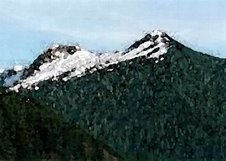Living up here under the shadow of the Arctic Circle, some of America's cultural phenomenons seem a little remote. Take NASCAR, for instance. I have in-laws in the Carolinas, and my husband grew up an hour's drive from Watkins Glen, so even though I know nothing about stock car racing, I do know that it is huge. We have two new books on the shelf that examine the history and the physics of this popular sport.
One Helluva Ride: how NASCAR swept the nation, by Liz Clarke, looks at the 60-year history of the National Association for Stock Car Auto Racing organization. A sportswriter who has covered the NASCAR beat for 17 years, Clarke has interviewed the greats of the sport: Richard Petty, Dale Earnhardt, Jeff Gordon and Junior Johnson. She discusses the growth of the organization, the stars who drew new fans - especially women - to the stands, and the marketing methods used to boost the sport's popularity. Beauty queens, much-touted rivalries between drivers, and tie-ins with Hollywood and Madison Ave have done much to contribute to making NASCAR what it is today.
If you're more interested in the cars themselves than the business side of NASCAR, try The Physics of NASCAR: how to make steel + gas + rubber = speed by Diandra Leslie-Pelecky. I've actually talked to someone who has been a technical advisor to the General Motors team, and it was amazing how many different ways there are to tweak a car - legally and illegally - to make it go faster, handle better, and drive longer. Even though the author is a physics professor at the University of Texas -Dallas, you don't have to be a physics expert to enjoy this book and understand the complexities behind auto racing. Nicely written explanations with plenty of diagrams, this book also contains interviews with people involved in stock car racing and anecdotes about the sport. If you really want to understand what's going on at the track, you should read this book.
Wednesday, July 16, 2008
Subscribe to:
Post Comments (Atom)

No comments:
Post a Comment